Cake mix cookies are the ultimate shortcut to sweet, chewy, and delicious cookies that are ready in under 30 minutes. These homemade cookies are incredibly easy to make and require only a handful of ingredients, most of which you might already have in your pantry. It's a versatile, no-fuss recipe perfect for picnics, barbecues, potlucks, and bake sales.
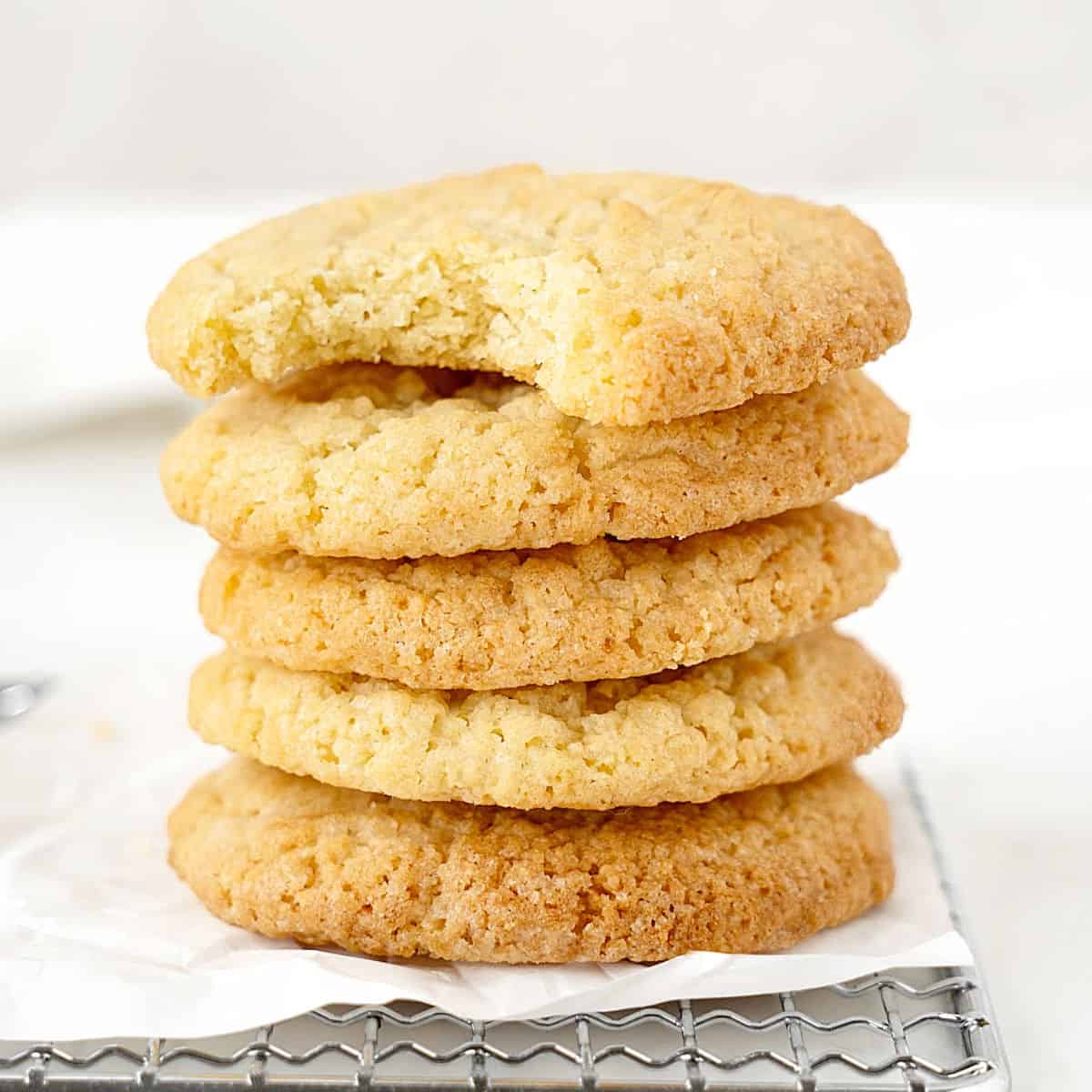
I bake from scratch, the old-fashioned way, most of the time. It turns out that some pre-made ingredients render very good desserts everyone loves.
As much as I love a good homemade chocolate chip cookie, sometimes I don't have the time or energy for that type of recipe. Because as easy as they are, they're more laborious than this recipe today.
Since posting this easy peach dump cake that uses a box of cake mix for the topping, they have found their way into this blog. And my eyes opened wide at how wonderful it turned out.
Why make this recipe
- Time-saving: they're incredibly quick to make and convenient, with simple ingredients that you probably have at home.
- Beginner-friendly: if you're new to baking and want to start with an easy cookie recipe, these are a fantastic starting point.
- Versatility: they offer endless possibilities for flavor variations. From classic chocolate chip cookies to red velvet and lemon cookies or funfetti, you can choose from a wide range of cake mix flavors to create cookies that suit your taste preferences.
- Sandwich cookies: these easy cookies are thin with a soft texture, perfect for filling with ice cream or other types of frostings and buttercreams.
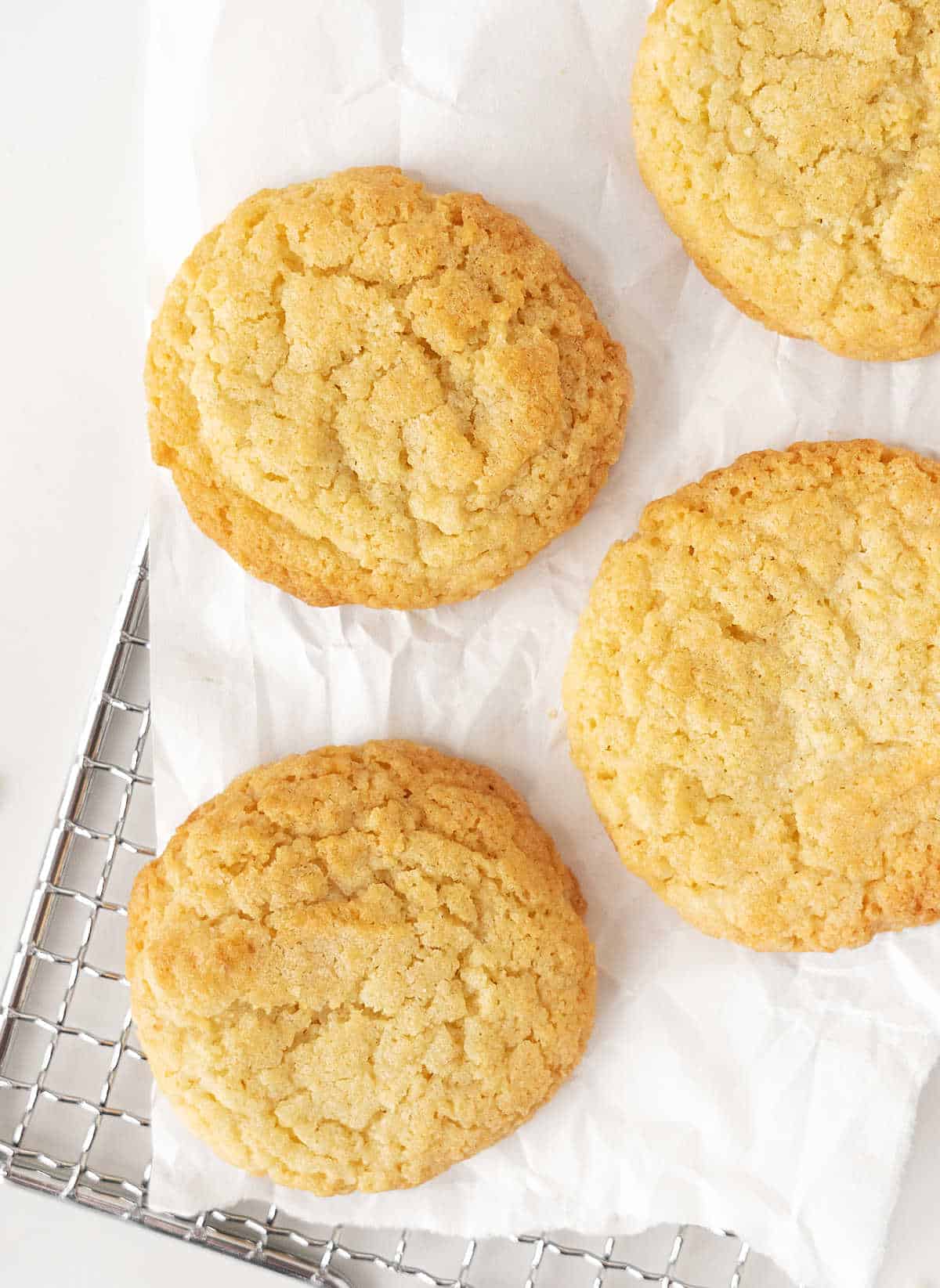
Ingredient list
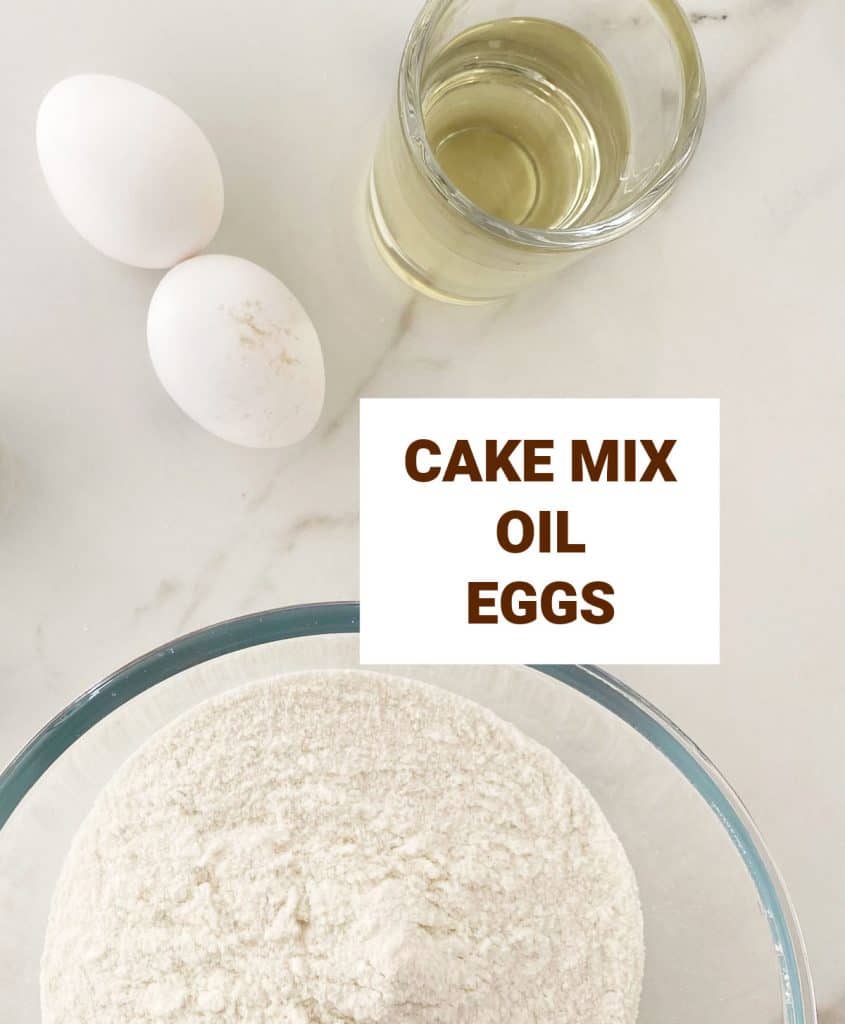
- Cake mix: I use yellow cake mix for this recipe. White cake mix will render similar results but paler cookies. Betty Crocker and Duncan Hines are popular ones.
- Vegetable oil: I use sunflower oil because it's neutral, but canola, coconut, and light olive oil work.
- Eggs: fresh.
See the recipe card towards the end of this post for quantities.
Variations & substitutions
This is a basic recipe for yellow cake mix cookies.
There are as many ways to iterate on it as there are dry cake mix flavors. And then the combination with your favorite mix-ins. So the possibilities are almost endless.
- Dry cake mix: change the flavor of the mix and get different-flavored cookies. Some examples are devil's food chocolate cake mix, orange supreme cake, red velvet cake mix, and strawberry cake mix. Whatever flavor of cake mix you like works.
- Add-ins: chopped nuts, chocolate chips, butterscotch or peanut butter chips, candy pieces, and sprinkles (for funfetti cake mix cookies) are just some extras you can add to cake mix cookie dough before baking.
- Butter: instead of oil, use the same amount (in volume ½ cup) of melted butter.
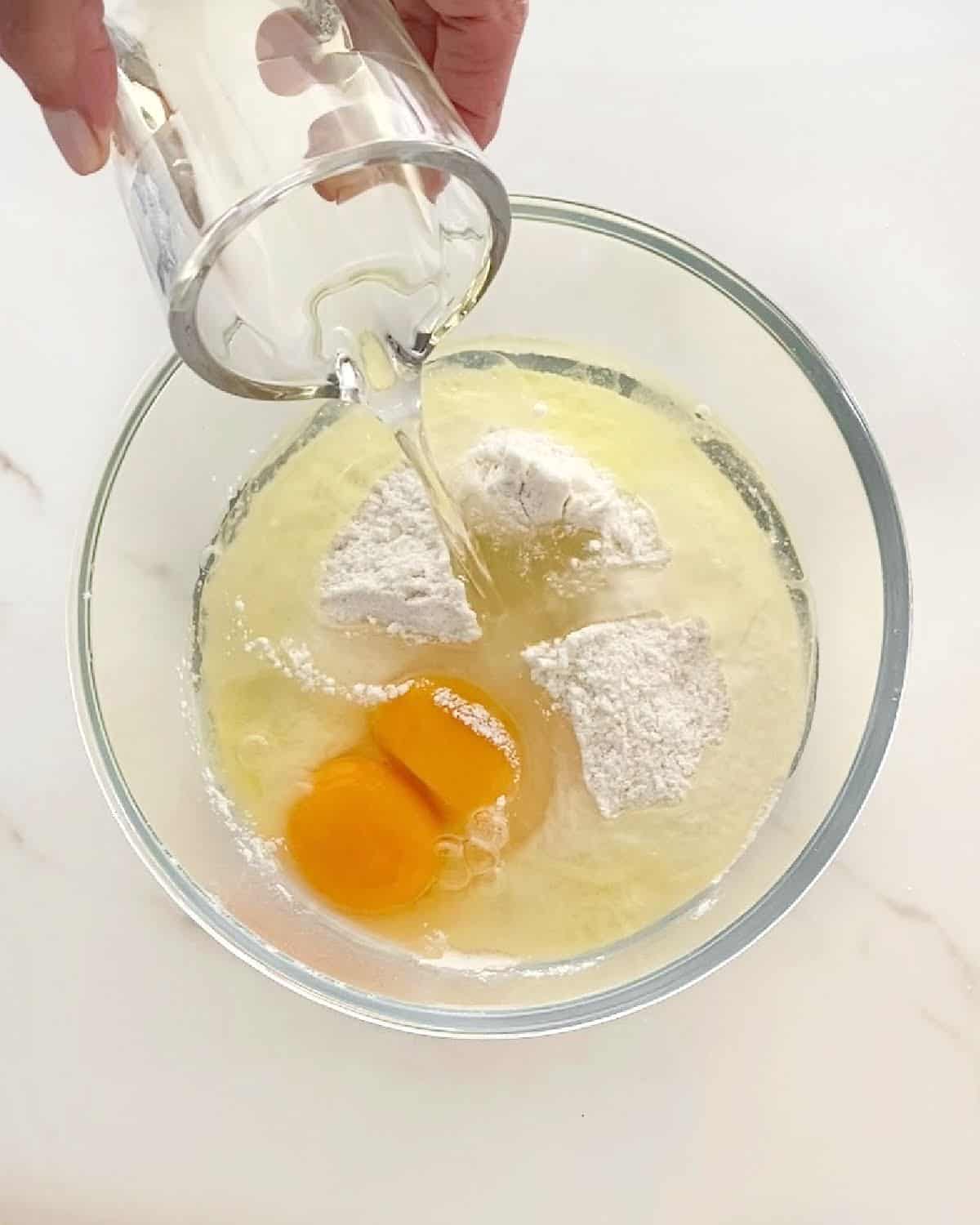
Combine all ingredients in a large bowl. Integrate well with a spatula or the lowest speed of an electric mixer, but don't overmix.
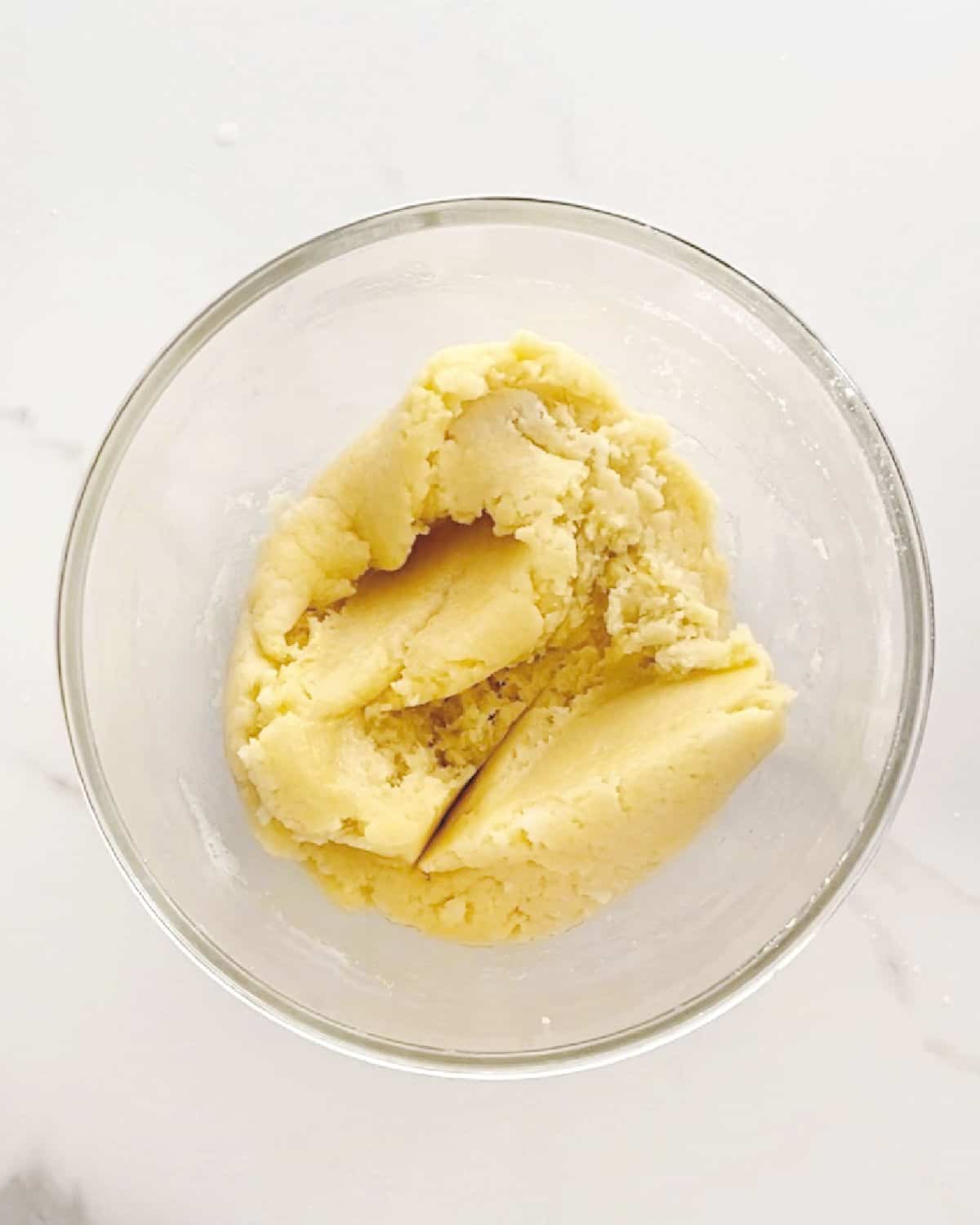
The final batter is shiny, smooth, and very dense. At this point, you can bake the cookies or cover and refrigerate the dough for 2 days.
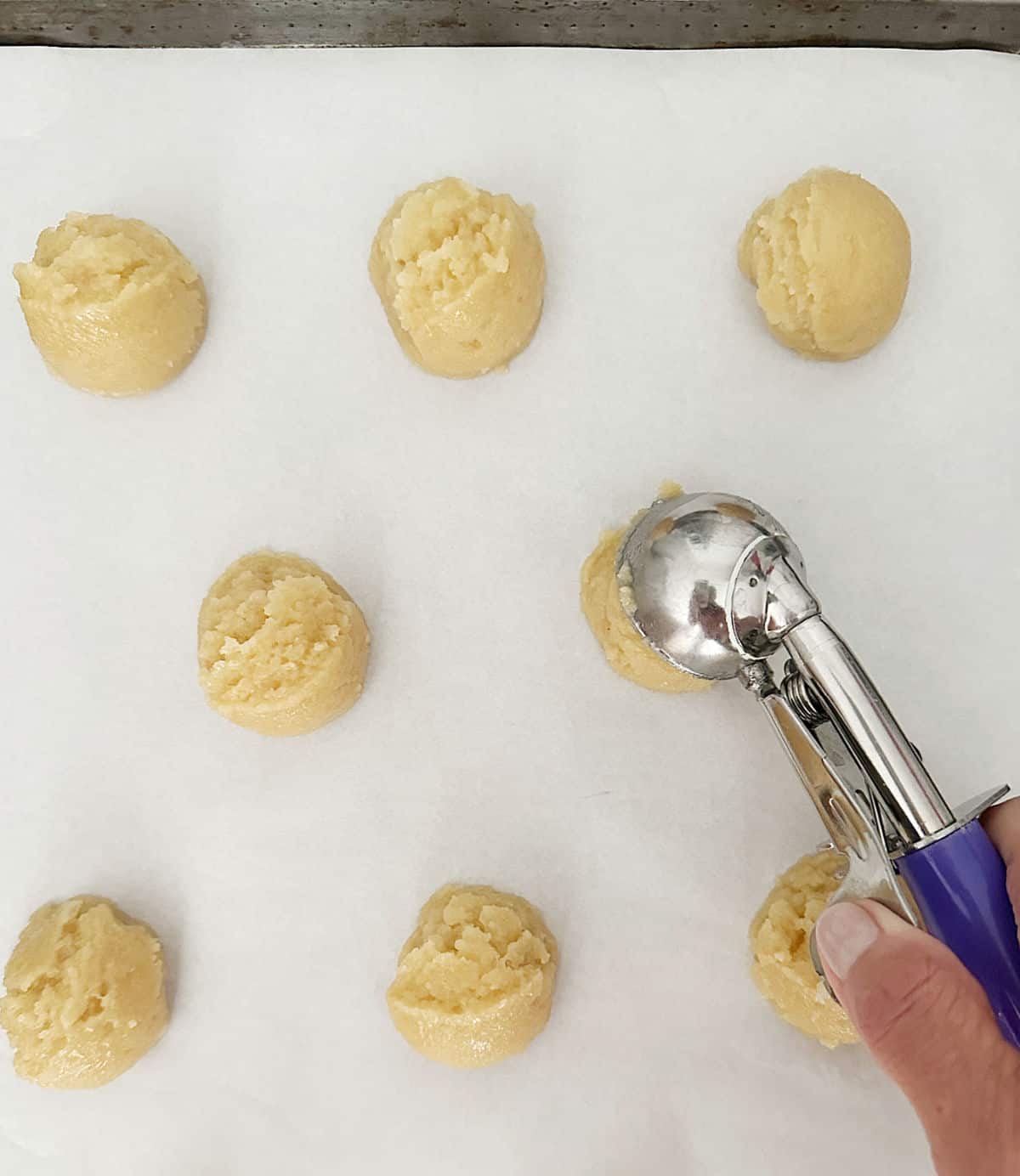
Using a cookie scoop will get you more evenly-sized cookies. You can also use a spoon and drop mounds. Leave roughly a 2-inch separation between each (depending on the size), so they can spread comfortably during baking. I use the small cookie scoop of this set that it’s 1.57 inches / 4cm in diameter for regular-sized cookies.
Vintage Kitchen tip: I always recommend doing a test run. Bake two or three cookies first and check the baking time to ensure you don't over or underbake them. Also, see how much they expand and adjust accordingly if needed so they don't touch during baking.
Kitchen notes
- Organization: read the recipe first and ensure you have ingredients at the correct temperature, equipment, and enough workspace. This will make the process so much easier.
- Baking time: keep in mind that all ovens and pans are different, even if they look similar. The baking time in my recipes is as accurate as it can be, but it might take you more or less time. You can use a thermometer(like the OXO oven thermometer) to check that your oven is at the right temperature. I recommend you keep track of how your oven works and what tiny details you might need to adjust.
- Cake mix brands: no matter which one you use, they may have slight variations in ingredients and texture, but the overall process should remain the same.
- Make the cookie dough in advance: refrigerate or freeze the cake mix cookie dough. Wrap it tightly in plastic wrap and store it in the refrigerator for up to 3 days. For longer storage, you can freeze the dough in an airtight container or freezer bag for up to 3 months. When ready to bake, allow the dough to thaw in the refrigerator before scooping and baking as usual.
- Storing baked cookies: always use airtight containers. I like metal tins. They last for about a week.
- Freeze unbaked cookies: scoop them onto a cookie sheet and freeze until rock solid. Transfer the frozen balls to sealable plastic bags and keep them for a month. Bake directly from the freezer, no need to thaw them first. They might take a minute longer.
- Dress them up: pipe or spread cream cheese frosting or chocolate ganache on top, choosing whatever flavor combination you like.
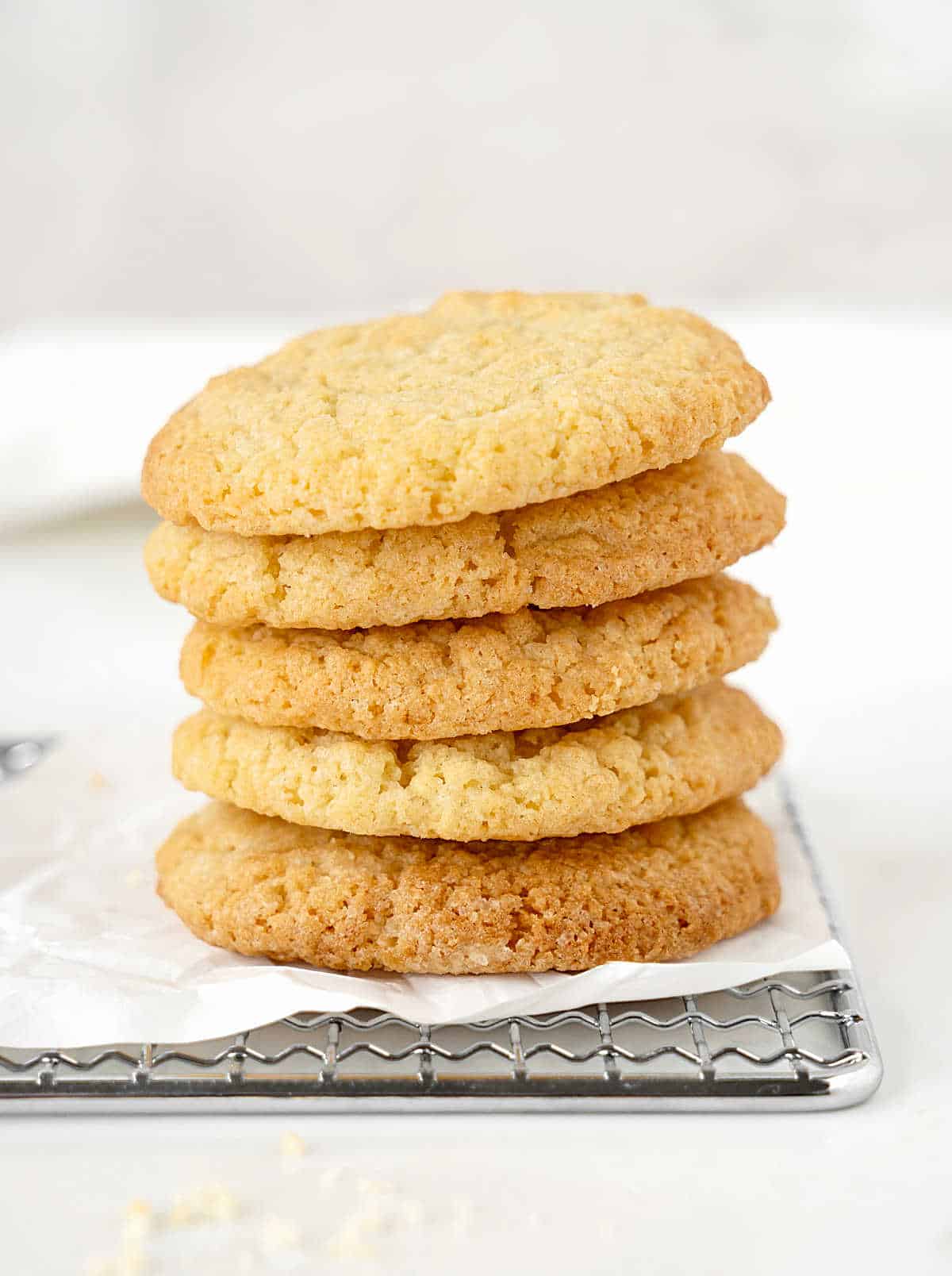
Troubleshooting common issues
- Flat or spreading cookies: the dough might've been too warm or the oven temperature too low. Try chilling the dough in the refrigerator for about 30 minutes before baking. Additionally, ensure your oven is preheated to the correct temperature in the recipe.
- Dry or crumbly texture: you may have overbaked them or used too much cake mix. Follow the recommended baking time in the recipe and check for doneness by looking for lightly golden edges and slightly underdone centers. Also, ensure you measure the cake mix accurately, as too much can produce a drier texture. If the issue persists (cake mix brands are different), add a tablespoon of softened butter or milk to the dough for added moisture.
- Dense cookies: overmixing the dough might result in heavy cookies. Use a hand whisk, a rubber spatula, or the lowest speed using an electric mixer. When it’s all incorporated, stop mixing.
- Sticking to the baking sheet: make sure it's properly greased (with baking spray or soft butter) or line it with parchment paper or silicone baking mats. This will help the baked cookies release easily.
- Unevenly baked cookies: if some are undercooked while others are overcooked, it may be due to uneven oven temperature, overcrowding the baking sheet, or different-sized balls. Use a cookie scoop, leave enough space between the cookie dough balls on the baking sheet to allow for even heat circulation, and consider baking in batches if necessary to avoid overcrowding.
Related recipes you might like:
Let me know in the comments below if you made this recipe and loved it and if you had issues so we can troubleshoot together. I love to hear what you think, always. Thanks for being here. It's much appreciated.
You might also consider subscribing to our FREE email series 'Baking the Best' and our regular newsletter. Or connect via Facebook, Instagram, and Pinterest.
As an Amazon Associate, I earn from qualifying purchases. Read my disclosure policy.
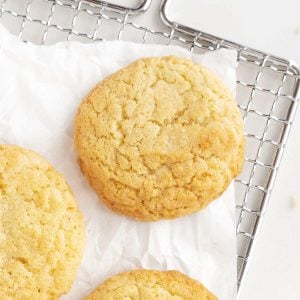
Cake Mix Cookies
Ingredients
- 15.25 oz box, 435g yellow cake mix
- 2 eggs, at room temperature
- ½ cup oil
Instructions
- Preheat the oven to 350°F (180°C).
- Combine the cake mix, eggs, and vegetable oil in a mixing bowl.
- Stir until all the ingredients are well combined. The mixture will be thick, shiny, and sticky.
- Line a baking sheet with parchment paper or lightly grease it.
- Scoop spoonfuls of the dough onto the prepared baking sheet, spacing them a few inches apart. You can also use spoons to drop them.
- Bake the cookies for about 10 minutes, until the edges are lightly golden brown. The cookies may appear slightly undercooked in the center, but they will firm up as they cool.
- Let cool for 10-15 minutes on a wire rack, until you can easily and carefully remove them from the baking sheet.
- Transfer them to a cooling rack to cool completely.
- Repeat the process with the remaining dough until all the cookies are baked.
- Once the cookies have cooled completely, you can store them in an airtight container for up to a week.



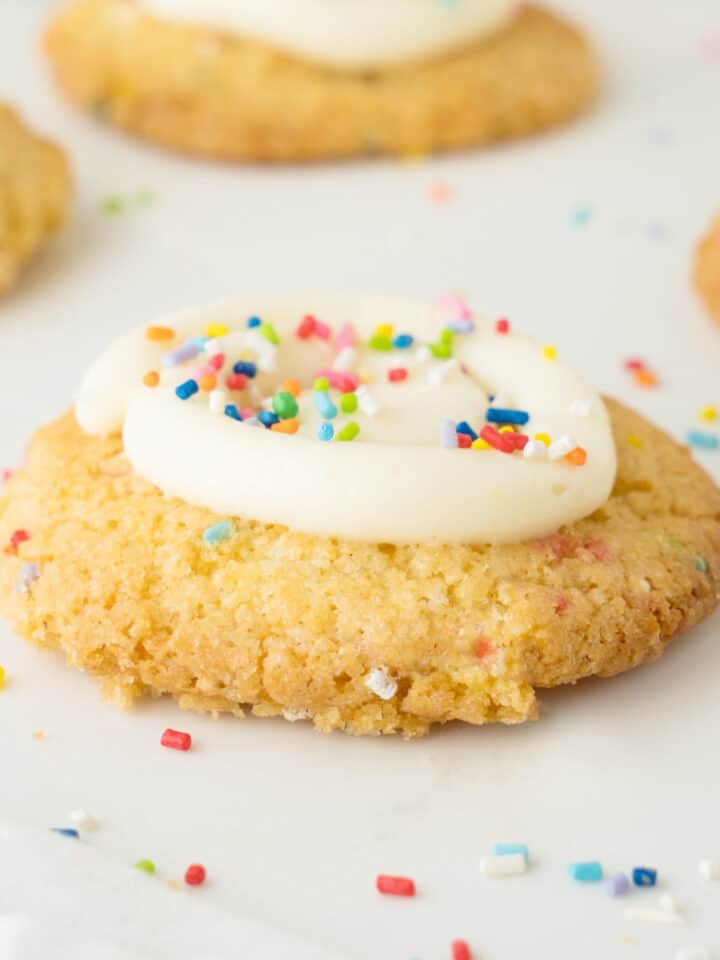
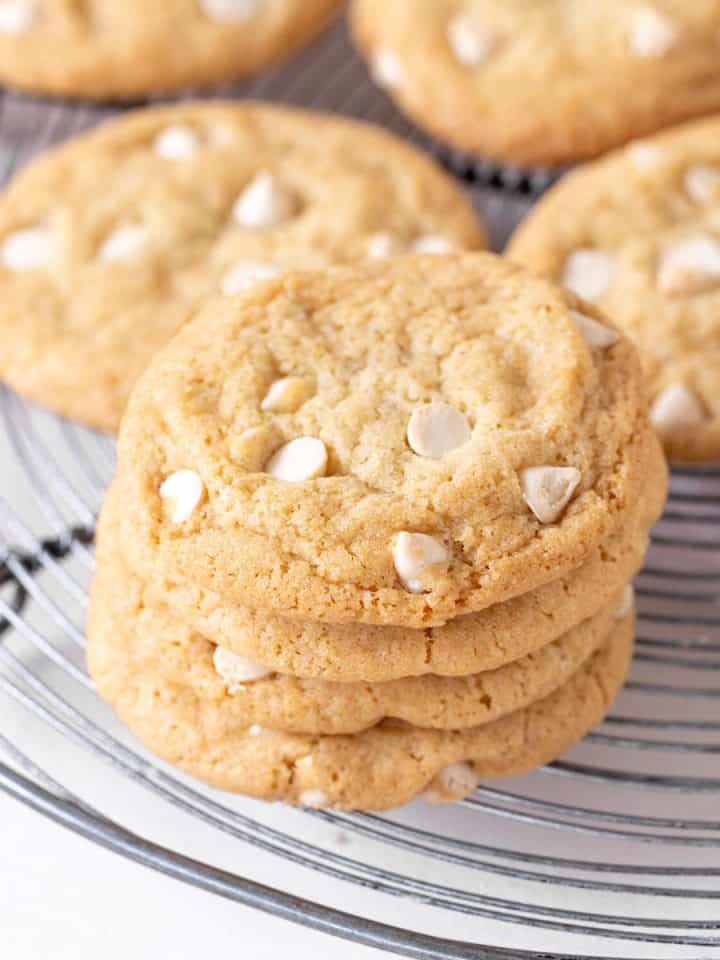
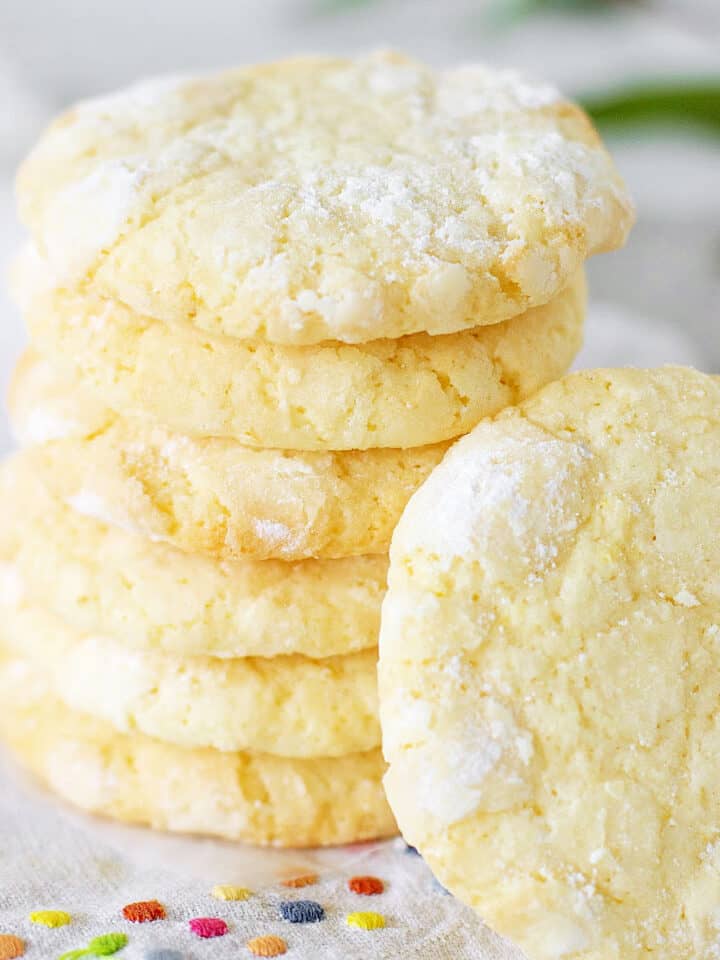
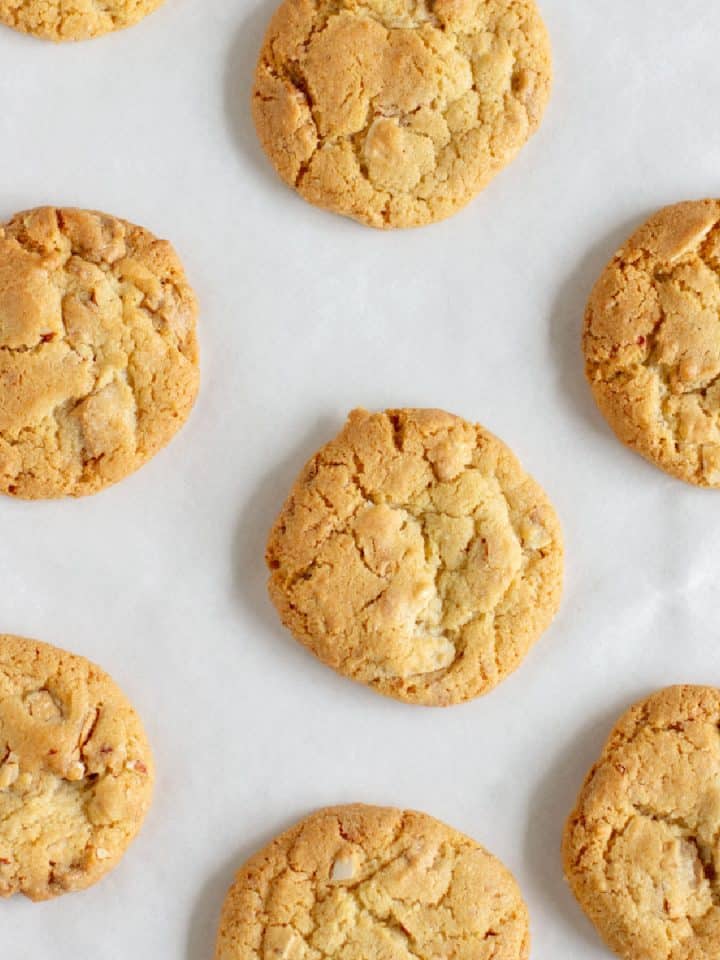
Marlene Gris says
Hi Paula,
I guess that I must have forgotten to send my initial review of this cookie. I used a French Vanilla cake mix and followed your instructions but added 1 tbsp of fresh lemon juice, 1 tsp of pure lemon extract and 2 tbsp of lemon rind. The cookies baked up beautifully and I sandwiched them with my homemade lemon curd. Perfect and tasty.
Thanks for this easy cookie recipe.
Marlene
Marlene Gris says
In my recent review of these cookies, I forgot to add that I also added 2 tbsp of grated lemon rind.
Marlene
Marlene Gris says
Hello Paula,
I had a French Vanilla cake mix sitting on my shelf for some reason. So decided to follow Mary Jean's lead with making these cookies. After following your instructions I added a tablespoon of fresh lemon juice, a teaspoon of pure lemon extract and white chocolate chips. I then sandwiched the cookies with my homemade lemon curd. Perfect!
Thank you for this really easy last minute cookie recipe.
Paula Montenegro says
They sound wonderful! I'll definitely be trying out a version of lemon cake mix cookies very soon. Have a great week Marlene!
Mary Jean Goodman says
Hi Paula. It's me again.
99% of the time I bake from scratch but I was in a hurry so I used this recipe. I did add a package of lemon jello, lemon juice, a tiny but of lemon extract and white chocolate chips. The volunteers I bake for at the soup kitchen said they were my best cookies yet! Very funny.
Thanks again for all the good recipes!
Paula Montenegro says
Thanks for letting me know Mary. I have to try it with those additions, they sound amazing! Have a great week.